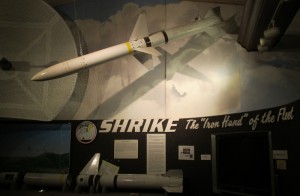Yesterday we continued south on U.S. 395, same spectacular Sierra Nevada scenery, same hot weather (around 90 degrees), moving more and more into desert. We made an early stop in Bishop to visit the Laws Railroad and Historical Museum. (Anything with the word “railroad” in it causes the RV to detour.)
The railroad town of Laws CA was built in the early 1880s in anticipation of the arrival of the Carson and Colorado narrow gauge railroad, the first train of which arrived in April of 1883. 
The decline and demise of Laws and the railroad in the early 1900s were the result of the local mines closing, trucking becoming cheaper than rail freight, and the City of Los Angeles buying most of the valley for the water rights to build the Owens Valley Aqueduct, which put an end to farming and turned fertile farmland into desert. Eventually all that was left were the depot, agent’s house, oil and water tanks, and turntable.
The Museum was begun in 1964, and local period buildings were relocated to this site to rebuild a replica of the town as it had existed in the 1880s. The number of buildings and quality of their exhibits is astounding! We’ve been to a lot of historical museums all over the country, and Laws is definitely one of the best! Building after building has been lovingly and expertly restored and stocked with quantities of period artifacts. Among our favorites were the print shop (with more interesting equipment than the famous one at Sturbridge Village), 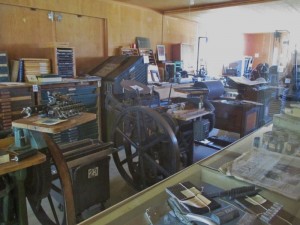
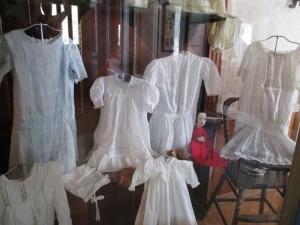
and the blacksmith shop (built of stone to avoid fires): 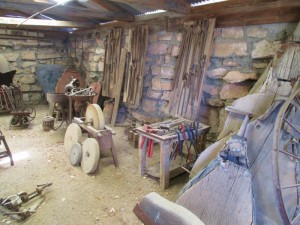
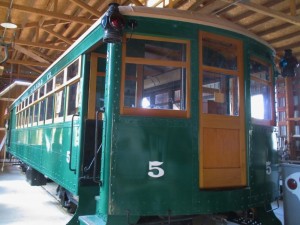
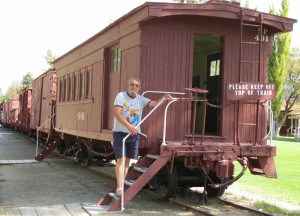
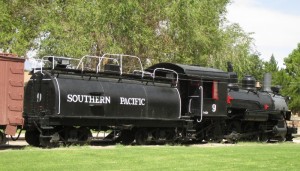
Back on U.S. 395, we continued south to our destination, the FamCamp RV park at the China Lake Naval Weapons Center. We had debated stopping there, because we knew it would be hot, but there was no better location to stop and we didn’t want to drive all the way to L.A. and arrive at rush hour. The further south we went, the hotter and more deserty it got. In hot weather we hang a quilt behind our seats as a barrier to keep the cooled air from the air conditioner in the front rather than letting it go to the back of the motorhome, but even so we were pretty ragged by the time we got to China Lake.
Opening the RV door was like opening an oven door. We hooked up and started both air conditioners. I went to do laundry while Patrick took a nap. By the time we went to bed, we had gotten the motorhome cooled down to about 80 degrees. Have I ever mentioned that I HATE being hot? Enough said.
Before we left China Lake this morning, we spent an hour at the China Lake U.S. Naval Museum of Armament and Technology on base. The museum houses a large variety of present and past US Navy aircraft, weapons (missiles and bombs) and technology developed at its test ranges there in the desert. As one of the exhibits states, everyone knows about the pilots, but no one thinks about the ordnance people who arm and load the weapons, nor the technical people who develop and test the weapons systems. It’s true, I never thought about them.
Besides two jet fighters in front of the museum, 
